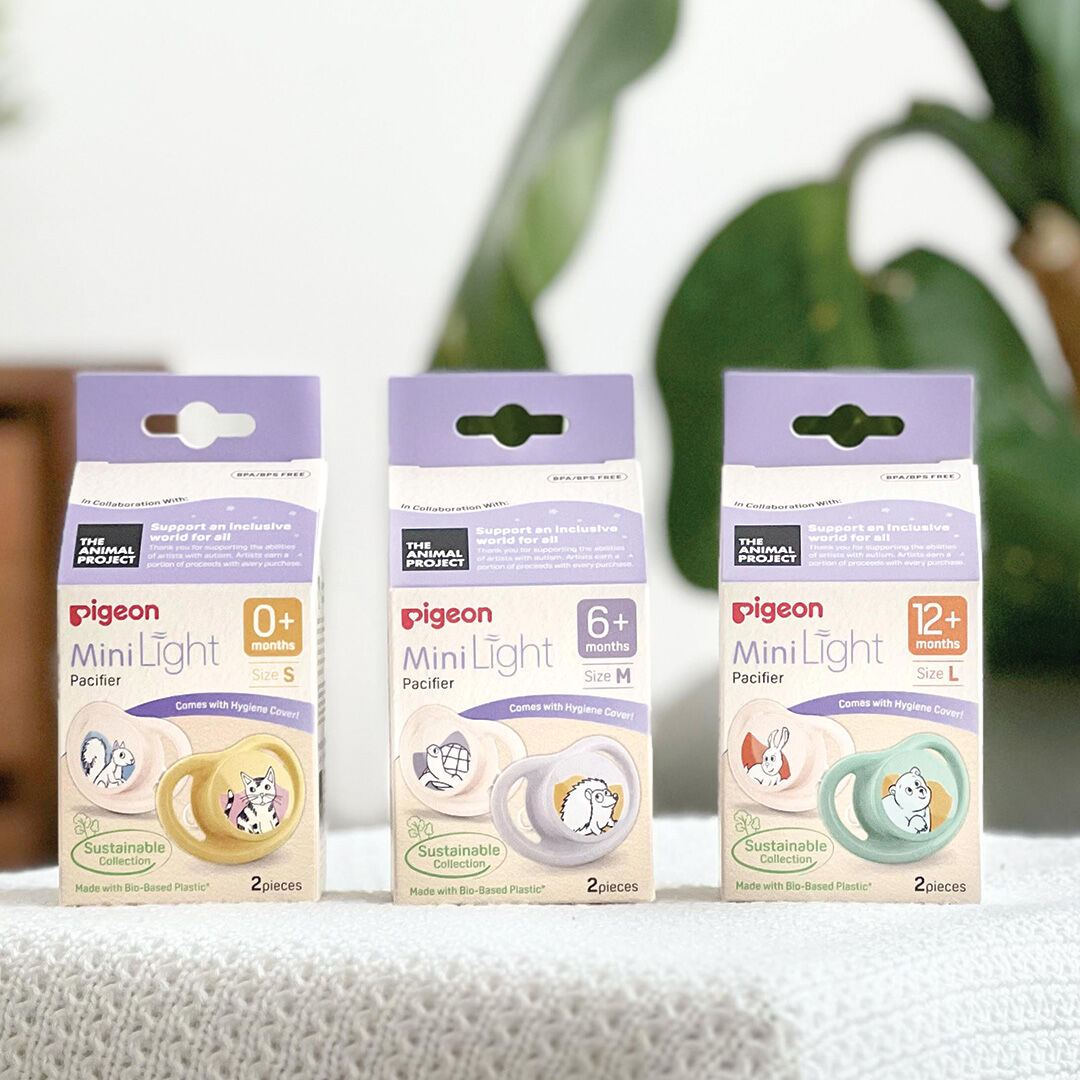Recent Articles
-
Is Your Baby’s Cup Helping or Hindering Their Oral Development?
Learn from Speech & Feeding Therapist Dr Lisa Lim how straw drinking supports your baby’s oral development, and why the Pigeon StarTouch™ Cup makes the difference. -
MiniLight Pacifiers Made with Purpose Initiative
Discover the Pigeon MiniLight Pacifier, ultra-light, baby-safe, and designed with purpose through The Animal Project collaboration for comfort and inclusion. -
SofTouch vs. Step-Up: Which Pigeon Bottle Fits Your Baby’s Stage?
Discover the difference between Pigeon SofTouch™ and Step-Up™ bottles — two feeding systems designed to support your baby from first latch to independent sipping.
Practical Strategies for Soothing a Colicky Baby

What is Colic?
Newborn cries can send shivers down any parent's spine. But what happens when the crying seems excessive and inconsolable? That's where colic comes in.
Colic is a period of frequent, prolonged crying in an otherwise healthy baby. It affects up to one in four infants, typically starting in the first few weeks and peaking around 2 months. It commonly follows the "rule of threes": crying for more than 3 hours a day, 3 days a week, for 3 weeks or more. Unlike normal crying, colic often comes on suddenly and intensely, with the baby appearing almost distressed.
While the exact cause of colic remains unknown, theories point to digestive issues, food sensitivities, or reflux.
Not only can colic be an incredibly frustrating time for the baby, but also for the parents. Not knowing how to soothe your baby can make you feel like you’re not doing the best job as a parent. Honestly speaking, it is a lot more common than you might realise and it helps to know that many families are going through it.
Recognising the Signs of Colic
According to The National Library of Medicine, if your baby exhibits the following behaviours along with excessive crying, it could be a sign of colic:
- Difficulty being soothed despite usual comforting techniques
- Frowning or grimacing facial expressions
- Reddened face
- Clenched fists and pulling legs up to their chest
- Episodes of arching their back
If you think your little one might be presenting signs of colic, we recommend you speak with your health care professional.

Tips for Managing Colic:
Calming a colicky baby can feel overwhelming. When frustration sets in, these simple tips can help parents manage colic in babies.
1. Try Soothing Techniques
Creating an atmosphere that enhances general calmness can effectively comfort the baby. This includes skin-to-skin contact, a light massage, a warm bath, gentle movement, or calming sounds. Try using a white noise machine or nature sound recordings, such as ocean waves or rainfall.
Of course, a common technique to calm your baby is by using a good pacifier. Our Minilight pacifier has received many glowing reviews for its soft and lightweight design. Not only does it help ease air flow, but many have said it's a product they simply cannot return from once they try it.
One of our five-star reviews reads, “I’ve tried about ten different dummies before finally finding this one, and finally, my baby will take one. Thank you. Now she naps for longer, and I’m able to get stuff done. Such a relief.”

2. Keep a Crying Log
A great tip for identifying potential triggers of colic is tracking your baby's crying patterns (feeding times, diaper changes, etc.). Monitoring the baby’s daily routine and habits could quickly indicate what may be causing the colic. This information can also be valuable for discussions with your Paediatrician.
3. Using Anti-Colic Recommended Feeding Products
If you suspect your baby's current products might be contributing to their colic, consider trying a range of colic-relief options integrated into everyday items.
Our anti-colic baby bottles are designed to allow air into the bottle while the baby is feeding, reducing swallowed air, a common cause of fussiness. As well as our bottles, all Pigeon teats boast a unique Air Venting System that promotes a steady milk flow, reducing the baby’s colic symptoms and helping your baby feed comfortably. The Pigeon Air Ventilation System (AVS™) is a feature of the Pigeon SofTouch™ Peristaltic PLUS teats, and unlike other products on the market, this is backed by medical research to decrease colic.

One of our customers said, “I wish I had started with this bottle. After 6 weeks of struggling with another brand, thinking it was the right one, we decided to give Pigeon a go. It’s a lot more comfortable for our baby, and she gets in a lot less air!”
Similarly, another happy customer went on to say, “We were having issues with reflux and met with a lactation specialist who recommended these bottles. We saw a huge improvement within one day! Highly recommend.”
4. Take a Break and Seek Support
Feel free to ask for help from your partner or family. Talk to your doctor about your concerns and coping mechanisms. They can help you explore potential causes, rule out other medical issues, and recommend additional strategies for managing colic. Support groups are available online and in your community that can connect you with other parents going through the same experience.
The Good News? Colic is Temporary
Most babies outgrow it by 3 to 4 months. If your baby's crying seems unusual or you have any concerns, always consult your Paediatrician.
Colic can be a challenging phase, but with patience, support, and the right techniques, you can help your baby find relief and navigate through this period of fussiness.
Remember: It's crucial not to feel alone or blame yourself. Colic is not your fault and doesn't reflect your parenting skills. By understanding the different reasons for crying, you can better respond to your baby's needs and create a calmer, happier environment for both of you.





